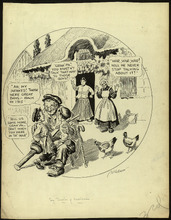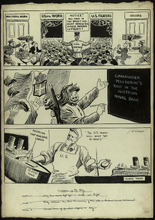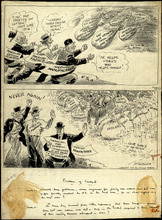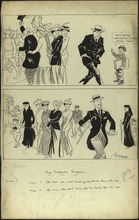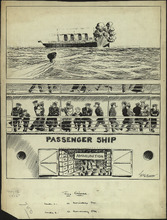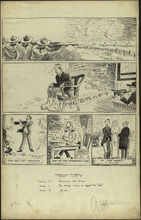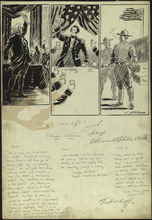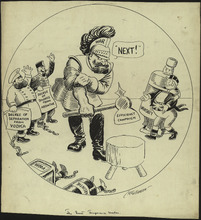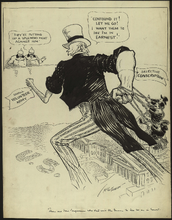This cartoon depicts the Lusitania, an American ocean liner destroyed by German naval forces in World War I on May 7, 1915. The ship was carrying American passengers and ammunition intended for the British armed forces. The top panel of the cartoon features the periscope of the German submarine spying on the Lusitania. Eventually the German submarine fired a torpedo, which killed 1,198 passengers aboard the ship. The bottom panel of the cartoon shows the 173 tons of ammunition carried on board the Lusitania and the innocent, most likely unaware passengers standing above it. The sinking of the Lusitania caused international outrage, but blame for the attack was passed back and forth between various parties. Many, particularly those in Great Britain, blamed the Germans who committed this attack. Others blamed the United States and the passengers, who ignored Germany's repeated warning that any ship attempting to enter Great Britain would be subject to attack. Many, including journalists for the Chicago Tribune, claimed Great Britain was responsible for this tragedy. Great Britain had placed immense pressure on the United States to deliver arms, and the British government assured the Lusitania it would be protected from German attack. The Chicago Tribune featured an entire article placing responsibility for the sinking of the Lusitania on Great Britain. After detailing Great Britain's interest in the Lusitania, the author of the article wrote, "England and England alone is to be held responsible for the loss of life because England lured Americans to death, hoping that the presence of Americans would protect the ship against German attack." (Summary created by Mary Delano, MU History Intern, Spring 2018)
